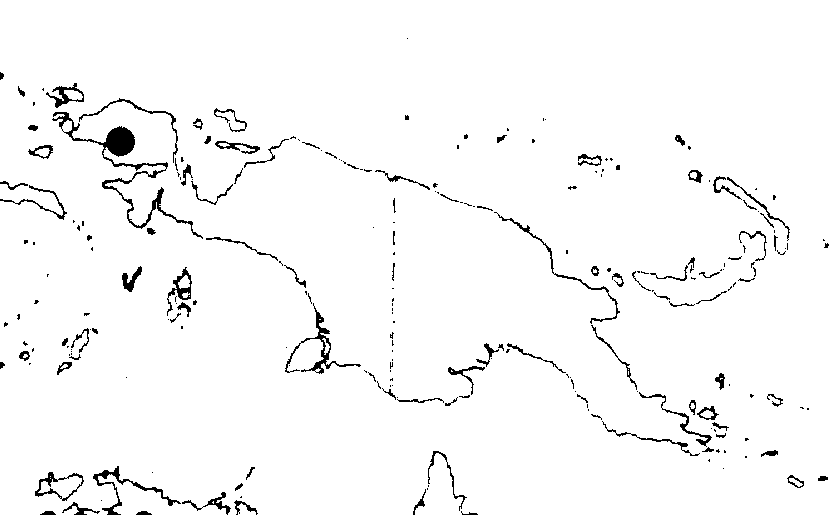
Distribution Map

Description (Barlow 1993)
Decaisnina amplexicaulis (Danser) Barlow, comb. novo
Amylotheca amplexicaulis Danser, Philipp. J. Sci. 58
(1935) 14. - Type: Ramos & Edano BS 38740 (lecto:
L, see below), Philippines, Mindanao, Bukidnon, Mt Candoon, vi-vii.1920.
For description see Danser, Philipp. J. Sci. 58 (1935) 14. The description is amended as follows: lea/lamina rounded to acuminate at the apex; inflorescence triads with the lateral flowers sessile or almost so; anther approximately equal to the free part of the filament. Apart from the sessile leaves, Decaisnina amplexicaulis has few specialized characters, and thus presents a relatively generalized facies for the genus. The species can be identified by its combination of relatively thin, distinctly bifacial leaves, sessile and cordate at the base, corolla more than 30 mm long, and free part of the anther filament more than 2 mm long. The flower colour has been recorded as purplish red in the lower part, white around the neck, and light green at the apex.
Decaisnina amplexicaulis occurs in Mindanao, Philippines, and in the Vogelkop, New Guinea (Fig. 2; 3 collections seen), recorded at elevations from 230 to 1500 m. Other habitat details and hosts are unknown. Danser (1935) saw only the type specimen from Mindanao, and the two additional specimens from the Vogelkop significantly extend the known area of the species. These latter specimens were previously referred to D. triflora (Barlow, 1974), and resolution of these misidentifications has clarified the circumscription and morphological boundaries of the latter species (see note under D. triflora).
See note under Decaisnina on the occurrence
of sessile cordate leaves in the genus. In the Philippines sessile
cordate leaves also occur in D. miniata and rarely in D.
cumingii. Decaisnina amplexicaulis differs from both these
species in having the free part of the staminal filament almost
as long as the anther. It also differs from D. miniata in
having smaller and less strongly bifacial leaves. It further differs
from D. cumingii in having a more strongly bifacial leaf
more strongly amplexicaul at the base, and in having much longer
flowers.
Although poorly known, the existing records of D. amplexicaulis
show that it occurs on both sides of Charles's Line. In view
of the morphological diversity in Decaisnina in the Philippines,
and the apparent biogeographic history of the genus, D. amplexicaulis
has probably reached New Guinea by migration from the northwest.
It presumably is part of the Malesian floristic element which
has migrated into New Guinea along the eastern humid forest track.
The holotype of Amylotheca amplexicaulis (PNH) is no longer extant. An isotype in L has been seen and identified as lectotype of the species name.
Additional specimens examined: Vink & Vink BW 15302 (L), New Guinea, Vogelkop,
NW side ofL Ajamaru, Segior, 230 m, 10.iii.l962; Vink BW 15366
(L), New Guinea, Vogelkop, N of Ajamaru, Tubun, 260 m, 12.iii.l962.
Illustrations
Photographs
Decaisnina amplexicaulis
updated 18 January 2007